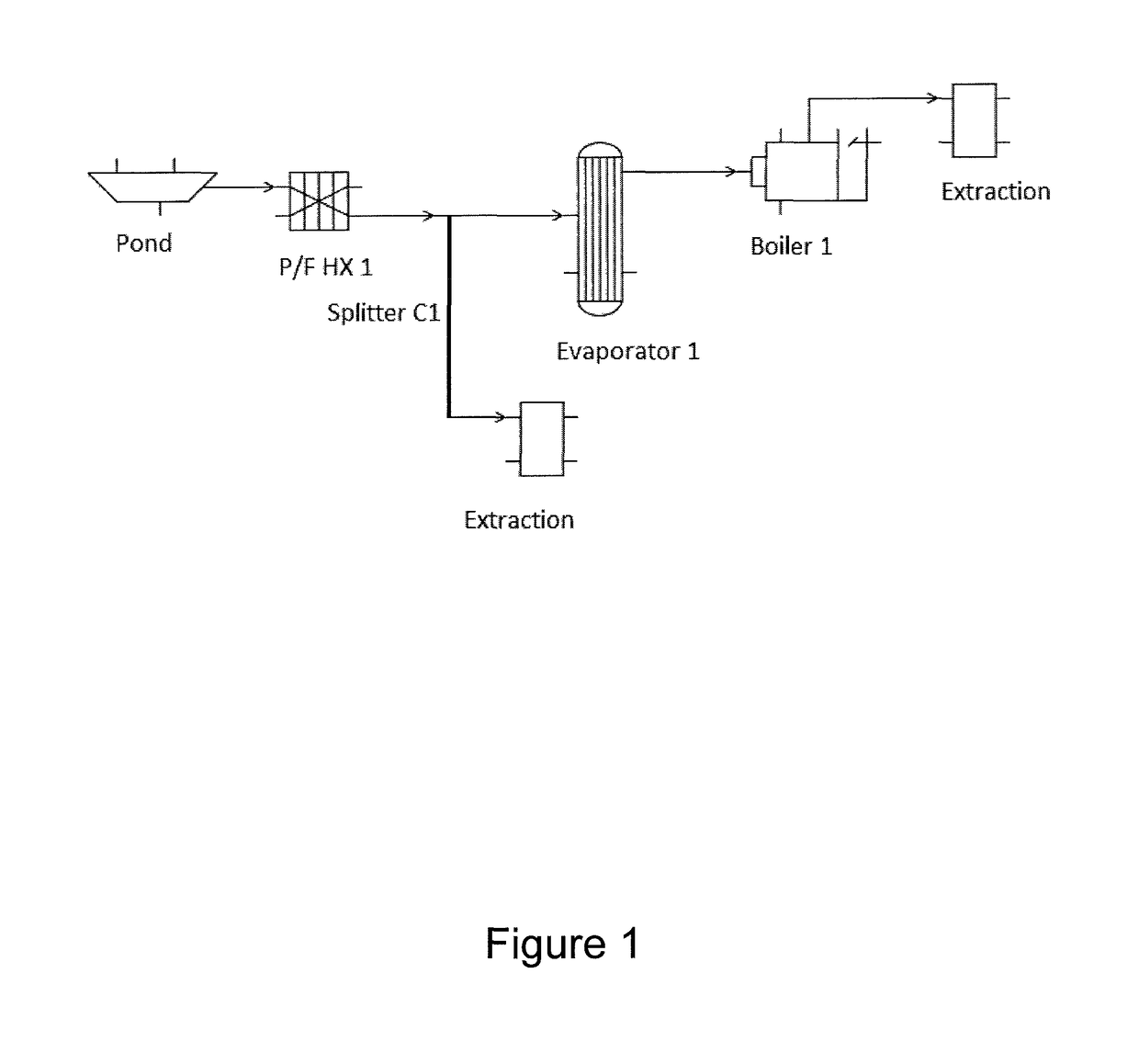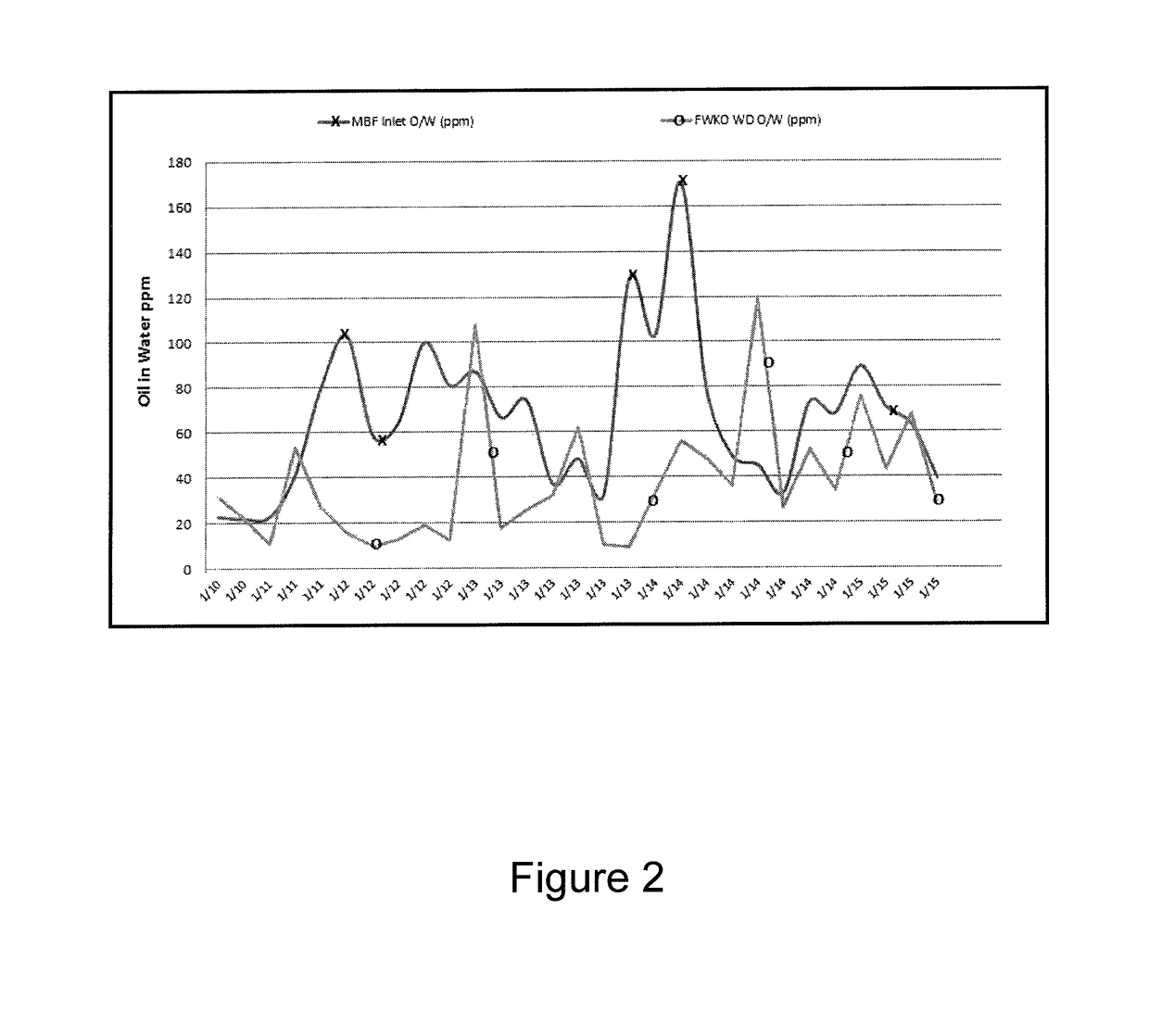Fouling mitigation in equipment used during hydrocarbon production
a technology for hydrocarbon production and equipment, applied in the direction of water/sludge/sewage treatment, chemical equipment and processes, hydrocarbons, etc., can solve the problems of heavy hydrocarbons that are difficult to recover or produce, various equipment can become contaminated or fouled, and the equipment can be contaminated or fouled. , to achieve the effect of reducing fouling, preventing or reducing fouling in equipment, and reducing fouling
- Summary
- Abstract
- Description
- Claims
- Application Information
AI Technical Summary
Benefits of technology
Problems solved by technology
Method used
Image
Examples
example 1
[0039]On both the tube side and the shell side of a heat exchanger being used in hydrocarbon recovery, extraction, or production, heavy tar-like deposits can accumulate. The deposits can have many different components and each component can comprise a different amount of the total deposit. For example, a deposit on the tube side can be from 45-55% sand and clay, 30-40% normal hydrocarbon (bitumen), and the remainder of the deposit can be 10-20% insoluble organics, such polar organics or organic salts, which might be a combination of naphthenates and demulsifier chemicals (such as esters and / or oxyalkylates).
[0040]With this information in mind, the present inventors performed laboratory studies to find a dispersant composition or solution to mitigate fouling. However, since the same water contacting the tube side of the exchanger could also contact the shell side of the exchanger, the results depicted below would be equally applicable to the shell side of the heat exchanger, the tube...
example 2
[0069]As can be seen in FIG. 2, example 2 supports the fact that aspects of the presently disclosed dispersants can actually clean any existing deposits or fouling on the equipment being used in the system. In example 2, Dispersant 3 was used, which is a 50 / 50 mixture of 1) a terpolymer of acrylic acid, acrylamide, and sulfonated acrylamide, and 2) ethoxylated phenol. Dispersant 3 was injected at a dose of 2.5 mg / L, directly into the outlet of the free water knock out (FWKO) which is located before the micro bubble flotation (MBF) tank. The rise in the oil in water, as can be seen in FIG. 2, going to the MBF inlet was the biggest indication that existing deposits of oil from the pipes was being cleaned. From the FWKO feed to the MBF tank inlet there is a large oil in water increase indicating oil removal from the pipe walls. This is also supported by an increase in turbidity indicating cleaning of the existing deposit containing both oil and silt. Thus, the presently disclosed dispe...
PUM
| Property | Measurement | Unit |
|---|---|---|
| length | aaaaa | aaaaa |
| temperatures | aaaaa | aaaaa |
| temperature | aaaaa | aaaaa |
Abstract
Description
Claims
Application Information
 Login to View More
Login to View More - R&D
- Intellectual Property
- Life Sciences
- Materials
- Tech Scout
- Unparalleled Data Quality
- Higher Quality Content
- 60% Fewer Hallucinations
Browse by: Latest US Patents, China's latest patents, Technical Efficacy Thesaurus, Application Domain, Technology Topic, Popular Technical Reports.
© 2025 PatSnap. All rights reserved.Legal|Privacy policy|Modern Slavery Act Transparency Statement|Sitemap|About US| Contact US: help@patsnap.com


